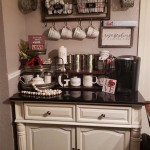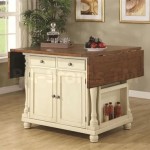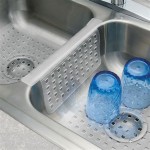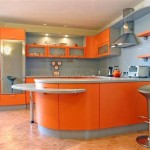Standard Size for Upper Kitchen Cabinets: Achieving Harmony and Functionality
When designing and planning a kitchen, the size of the upper cabinets plays a crucial role in determining the overall aesthetics, storage capacity, and functionality of the space. While there are no strict rules when it comes to cabinet sizes, there are certain standard dimensions that are commonly used to ensure a harmonious and functional layout. ### General Guidelines for Standard Upper Cabinet Sizes * Height: The standard height for upper kitchen cabinets typically ranges from 30 inches to 42 inches, with 36 inches being the most common choice. This height provides ample clearance for countertops and allows for easy access to the contents of the cabinets. * Depth: The standard depth for upper kitchen cabinets is typically either 12 inches or 15 inches. A depth of 12 inches is suitable for storing plates, glasses, and other everyday items, while a depth of 15 inches offers more space for bulkier items such as pots and pans. * Width: The width of upper kitchen cabinets can vary depending on the layout and design of the kitchen. However, common widths include 12 inches, 15 inches, 18 inches, 24 inches, and 30 inches. The choice of width should consider the available space and the intended use of the cabinets. ### Factors to Consider When Choosing Upper Cabinet Sizes When determining the specific sizes of your upper kitchen cabinets, there are several factors to keep in mind: *Kitchen Layout:
The layout of your kitchen will influence the size and placement of the upper cabinets. If you have a small kitchen, you may want to opt for smaller cabinets to avoid overcrowding the space. In a larger kitchen, you can choose larger cabinets to create a more balanced look. *Countertop Height:
The height of your countertop will also affect the size of the upper cabinets. If you have a higher countertop, you may need taller cabinets to maintain a comfortable reach. *Intended Use:
Consider how you plan to use the upper cabinets. If you need them for storing everyday items that you frequently access, you may want to choose cabinets with a shorter height and a wider depth. If you need them for storing bulky items or seasonal items, you may want to choose taller cabinets with a narrower depth. *Aesthetics:
The size of your upper cabinets should also complement the overall design and style of your kitchen. If you have a traditional kitchen, you may want to choose cabinets with a classic, shaker-style design. If you have a modern kitchen, you may want to choose cabinets with a sleek, contemporary design. ### Customizing Upper Cabinet Sizes While standard sizes provide a good starting point, you may need to customize the sizes of your upper cabinets to accommodate specific needs or preferences. This may involve adjusting the height, depth, or width of the cabinets to create a more personalized and functional layout. When customizing cabinet sizes, it is important to work with a qualified kitchen designer or cabinet maker who can help you determine the best dimensions for your space. They can also provide guidance on cabinet features, materials, and finishes to ensure a cohesive and functional kitchen design. --- By carefully considering the standard sizes, factors to consider, and customization options, you can choose the right size for your upper kitchen cabinets, creating a space that is both visually appealing and highly functional.
Kitchen Unit Sizes Cabinets Measurements Height Cabinet

Kitchen Wall Cabinet Size Chart Builders Surplus Cabinets Dimensions Sizes

The Ultimate Guide To Standard Kitchen Cabinet Sizes Unique Design Blog

Kitchen Cabinet Sizes What Are Standard Dimensions Of Cabinets

Wall Cabinet Size Chart Builders Surplus
Guide To Kitchen Cabinet Sizes And Dimensions

3 Types Of Kitchen Cabinets Size Dimensions Guide Guilin

Pin By Nicole On Measurements Kitchen Cabinets Height Cabinet Sizes

N Standard Kitchen Dimensions Renomart

Icymi Kitchen Cabinet Depth Dimensions Kitchencabinetsdimensions Upper Cabinets Wall
Related Posts








